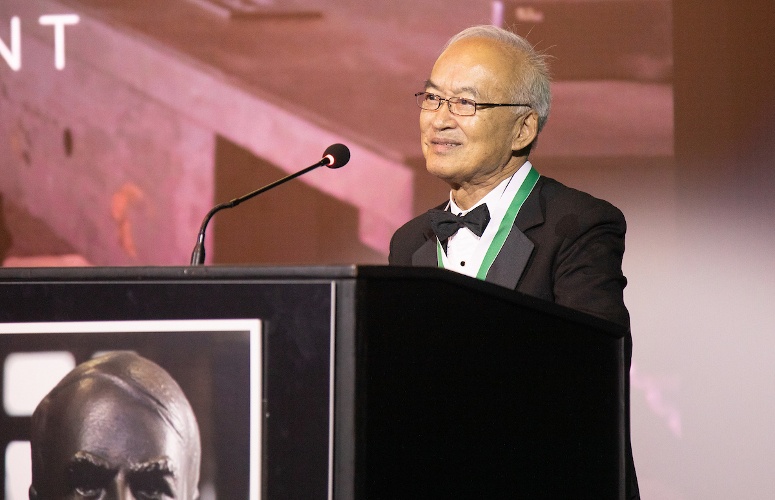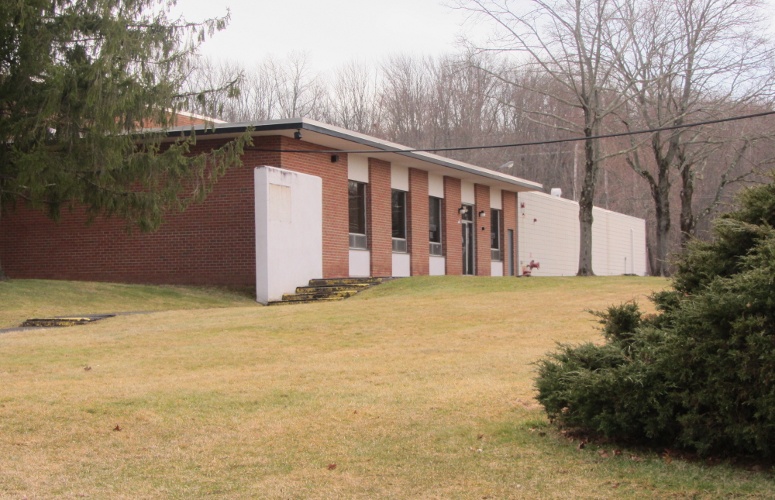
2018 Edison Patent Award Winners, Special Individual Honorees Recognized
On Nov 5, 2018The Research & Development Council of New Jersey recently honored 15 organizations, along with 61 inventors, at the 39th Edison Patent Awards Ceremony & Reception at the Liberty Science Center in Jersey City.
BASF, Celularity, Ethicon, part of Johnson & Johnson Medical Device Companies, ExxonMobil, Honeywell, Johnson & Johnson Consumer Inc., Merck, NJIT, Princeton University, Rutgers Biomedical and Health Sciences, Rutgers University-New Brunswick, Siemens Corporate Technology, Siemens Healthineers, Stevens Institute of Technology, and SubCom, were recognized for innovative patent work spanning 15 R&D categories, including: agriculture, biomaterials, biotechnology, consumer, enabling technologies, energy, environmental, industrial processes, information technology, medical imaging, pharmaceutical, public health, smart grid, technology transfer, and telecommunications.
For nearly four decades, the Council has placed a call for nominations for its Edison Patent Award. The Council then assembles a committee of top state researchers across STEM (Science, Technology, Engineering and Math) disciplines who review the nominations and judge them based on four criteria: the significance of the problem researched, novelty and utility of the patent, and the patent’s commercial impact. Those with the highest scores are declared winners and join the ranks of the hundreds of amazing researchers who are Edison Patent Award alumni. Recognizing that New Jersey is home to some of the most cutting-edge patent work dating back to the 1800s, the Council developed this award to memorialize its most prolific inventor, Thomas Alva Edison, and to highlight the Garden State’s continuous pipeline of exceptional innovation work.
“New Jersey is home to so much innovation that the inventors and organizations doing this incredible work deserve to be recognized,” said Larry O’Connell, Research & Development Council of New Jersey Chair and IBM. “For nearly 40 years now the Council has made part of its mission to highlight New Jersey’s diverse and substantial innovation economy, and patents are the foundation of it.”
The R&D Council also honored Dr. Alfred Cho, Bell Labs’ researcher, the Center for Structured Organic Particulate Systems at Rutgers University, and Rowan University President Ali Houshmand, for their unique contributions to science and technology, successful public-private partnerships that drive innovation and STEM education.
Dr. Alfred Cho will receive the Council’s Science & Technology Medal. Dr. Cho spent his career at Bell Labs where his research focused on semiconductor devices. He is recognized as the co-inventor and principal developer of molecular beam epitaxy (MBE), for which he was awarded the National Medal of Science by President Clinton and the National Medal of Technology by President George W. Bush. MBE is a process in which materials are layered atop of one another, atom by atom with in a vacuum, with great precision to form electronic and photonic devices. The MBE technique leads to revolutionary electronic and photonic devices used in microwave and lightwave communications and in the most powerful, high-speed computers. It leads to smaller, faster, cheaper and more reliable devices than those produced by conventional means. Examples are the high electron-mobility transistor (HEMT)-based high-speed low-noise preamplifiers used in smart phones, the modern-day semiconductor lasers based on quantum well structures – almost all laser diodes used today, for fiber optic communications or blue-ray DVD player applications, and the vertical cavity surface-emitting lasers (VCSEL) used in iPhone for Face ID application.”
The Center for Structured Organic Particulate Systems, better known as C-SOPS, was awarded the Chairman’s Award. A team from C-SOPS, led by Dr. Fernando Muzzio, C-SOPS Director and Rutgers University Distinguished Professor, which includes representatives from NJIT and industry partner Janssen, took the stage at the November 1st ceremony. C-SOPS brings together a cross-disciplinary team of researchers from major universities to work closely with industry leaders and regulatory authorities to improve the way pharmaceuticals, foods and agriculture products are manufactured. Other C-SOPS partners include Purdue University and University of Puerto Rico at Mayaguez.
Rowan University President Ali Houshmand was honored as Educator of the Year. Houshmand oversaw the opening of Cooper Medical School of Rowan University in Camden as well as, the integration of the School of Osteopathic Medicine in Stratford from the former University of Medicine and Dentistry of New Jersey. With both schools being part of Rowan, the University became just the second in the nation to offer both M.D.- and D.O.-granting medical programs. Under Houshmand, Rowan is also partnering with Rutgers-Camden to develop a research hub in the life sciences in the City of Camden and, committed $50 million to support research there. Another STEM achievement led by President Houshmand is Rowan’s strategic partnership with Lockheed Martin to develop a unique, industry-leading workforce credentialing program.
“Our individual award winners have made an incredible impact in innovation and STEM, both in New Jersey and around the world,” said Council President Anthony Cicatiello. “From contributions to high-speed transistors, to developing future doctors and engineers, and to advancement in manufacturing pharmaceuticals, New Jersey should have the utmost pride in the work of these winners and we should continue to champion them and others who continue to grow the innovation economy.”
Below are descriptions of the innovations and discoveries made by this year’s 15 honored organizations:
BASF
EPA standards have become more stringent for the trucking industry and heavy duty diesel engine trucks needed a catalytic system to collect all the dark soot coming out of their exhaust systems. This patent takes all the heavy soot out of the diesel engine exhaust system and when it accumulates in the filter, the soot is burned off by a heat process that is unique part of this patent. That process works simultaneous with the diesel oxidation catalysts which removes hydrocarbons and carbon monoxide from the exhaust. The product on the market developed by BASF meets not only US standards, but standards that are changing around the world.
Celularity
Celularity’s patent produces cell and tissue products taken from postpartum placenta to harness the unique properties of human cells that are then used to repair serious injuries on humans. These products have proven to be remarkably useful for burn injuries, acute and chronic wounds, tendons, and nerve and soft tissue repair. The use of human cells have improved the success rate of healing in many individuals and makes the products from this new company, which are produced in New Jersey, highly successful.
Ethicon, part of Johnson & Johnson Medical Device Companies
Bleeding is a major problem for doctors when they are performing surgery or for a patient who a major injury. Ethicon, a part of Johnson & Johnson Medical Device Companies, came up with a unique patent that reduces bleeding in surgery and enables doctors to get to certain areas that were otherwise hard to reach. This patent is most useful in minimally invasive endoscopic and laparoscopic surgical procedures as well as open surgical procedures. The ability to rapidly stop bleeding in critical surgical situations is a major breakthrough and has been well received in the marketplace.
ExxonMobil Research & Engineering Company
In the drilling process for oil and gas, there are many things that could go wrong. Pipes can break, surfaces can become abrasive, and drilling can get delayed. This patent basically produces an energy saving, low friction coating technology that also improves abrasion and wear resistance. This was possible because the patent utilizes a multi-layered coating process that reduces friction while enhancing adhesion and toughness of the coating for increased durability. This is a major improvement in the marketplace and ExxonMobil licenses this process to third parties who target high impact oil and gas applications.
Honeywell
This patent provides a major breakthrough for water quality, especially in emerging countries. Contamination of potable water and inadequate access to purified potable water fit for human consumption is an alarming issue across the world. This patent by Honeywell pertains to drinking water purifying material. It can be utilized in making water filters having a specific composition that can selectively remove toxic heavy metals such as arsenic and inorganic fluorides found in groundwater around the world. It is estimated that about 150 million people globally are exposed to harmful levels of arsenic and another 100 million to fluoride. This patent is also at a low cost which makes it ever more available for those emerging countries.
Johnson & Johnson Consumer Companies Inc.
Johnson & Johnson Consumer Companies came up with a patent that provides a substance of low-irritation, high foaming cleansing component for its consumer line of products. The team’s research employed a variety of testing with the emphasis on nonpenetrating/nonirritating to skin and harmless to the environment. The work clearly demonstrates originality and a strong contribution to the field of polymeric chemistry. The success of this research can be seen in the J&J products AVEENO shampoo, CLEAN & CLEAR cleansers, and NATURSURF for people with acne issues. More research is continuing on this product in the future.
Merck & Co., Inc.
This patent involves the development of the ideal commercial manufacturing process, one that is green oriented and innovative in efficiencies. All of this had to be done without compromising process robustness, product quality or patient safety. The team put together for this patent had to come up with new chemistry and, for this, the U. S. Environmental Protection Agency awarded Merck the 2017 Presidential Green Chemistry Award for the commercial manufacturing process established with this patent. It is typical of the work that Merck does in both discovering new products, but also working diligently to manufacture those products as efficiently as possible.
New Jersey Institute of Technology
The patent is about solar technology and the improvements being made for the use of solar panels. This patent improved the solar to electric energy conversion efficiency which has enormous socio-economic value. Since solar panels are utilized in large scale as the clean energy source, it has been expected that every 1% increase in efficiency is creates about a billion dollars worth of value. This patent provides a method to enhance p-doping of the cadmium telluride thin film used in solar cells. The project was a unique collaboration between NJIT, China and a Germany company – all of which worked in collaboration with the professor at NJIT.
Princeton University
This patent is having a tremendous impact in the marketplace. The patent originated from a Ph.D. dissertation from a student, who is a Merck employee finishing his Ph.D. The student’s knowledge of nanoparticles was then combined with a professor at Princeton who is a specialist in polymers. The patent is a novel way of preparing nanoparticles that can be combined with a drug embedded in a copolymer. That combination, with careful mixing, can remain stable enough to bring the drug precisely where it needs to go for maximum impact. Delivery of a drug to the critical area minimizes side effects and other potential problems. This patent has started a whole new arena of research using polymers and nanoparticles, which Princeton has taken a lead in through its professor.
Rutgers Biomedical and Health Sciences
This patent makes it easy for researchers to identify mRNA, messenger RNA, which is critically important in tracking the exploration of gene expression in diverse fields ranging from immunology to neurobiology. The Rutgers team was able to develop singly-labeled probes for the mRNA with bright fluorescent spots that can easily be watched in an ordinary fluorescence microscope. This has enabled researchers to see mRNA more specifically than was possible with earlier technologies. Due to the simplicity of the design and accuracy of the signals, this method has been adopted in thousands of laboratories around the world to explore gene expression in a wide variety of biological contexts.
Rutgers University-New Brunswick
New Jersey is well known for its cranberry production capacity in the southern part of the state. A Rutgers professor, Nick Vorsa, has been doing research on the cranberry for more than 20 years and was able to combine three cranberry strains, one from Massachusetts, another from Wisconsin, with a third from New Jersey. This combination has produced a cranberry strain that he has name “The Mullica Queen” and it has proven to be one of the most productive cranberry crop producers ever recorded. It is now considered the popular choice on the market. Rutgers Agricultural Extension program is one of the most highly regarded in the country.
Siemens Corporate Technology
Siemen’s has been working with utilities to help them develop systems to make the distribution of energy more efficient. This patent provides a mechanism called Bidirectional Demand Response Control system which enables utilities to get feedback from their customers and redirect energy through the grid to the areas that most need it. As more and more people buy electric cars and plug them in when they get home at night, it creates a new demand that needs to be managed efficiently.
Siemens Healthineers
When you think of avatars, you think of the movie. Not at Siemens. The Siemens team was able to create 2-D and 3-D images of a patient, in effect a personal avatar, and make it available to a radiologist so that a patient can be positioned precisely where they need to be for a CT Scan. This patent reduces the difficulties associated with positioning patients accurately on the CT table. With artificial intelligence as a foundation, automated patient positioning can expand precision medicine and potentially improve patient outcomes. Correct positioning improves the quality of images and ultimately better diagnoses and treatment.
Stevens Institute of Technology
A professor and one of his students were discussing how inefficient it is to use a browser to search for information and then not have a way of organizing it so that it is more relevant to what you were searching for in the process. That’s when they came up with the patent “i-bubble” which is a new way of organizing large amounts of data in a more utilitarian way. I-bubble has already been sold in the marketplace and the two researchers are refining the i-bubble format and looking into more products along this line.
SubCom
Underwater cable systems is the way the world connects to one another, and SubCom is one of the major producers and distributors of underwater cable systems in the world. Sometimes, through a variety of factors such as hurricanes, storms, movement on the ocean floor, the cable systems will send signals that the system is not functioning properly and there needs to be a way to check the cable without having to go through the costly process of pulling up cable. SubCom’s patent provides just this type of service for its network management and its customers. Several sophisticated proprietary algorithms were developed to solve this problem.
To access more business news, visit NJB News Now.
Related Articles:






